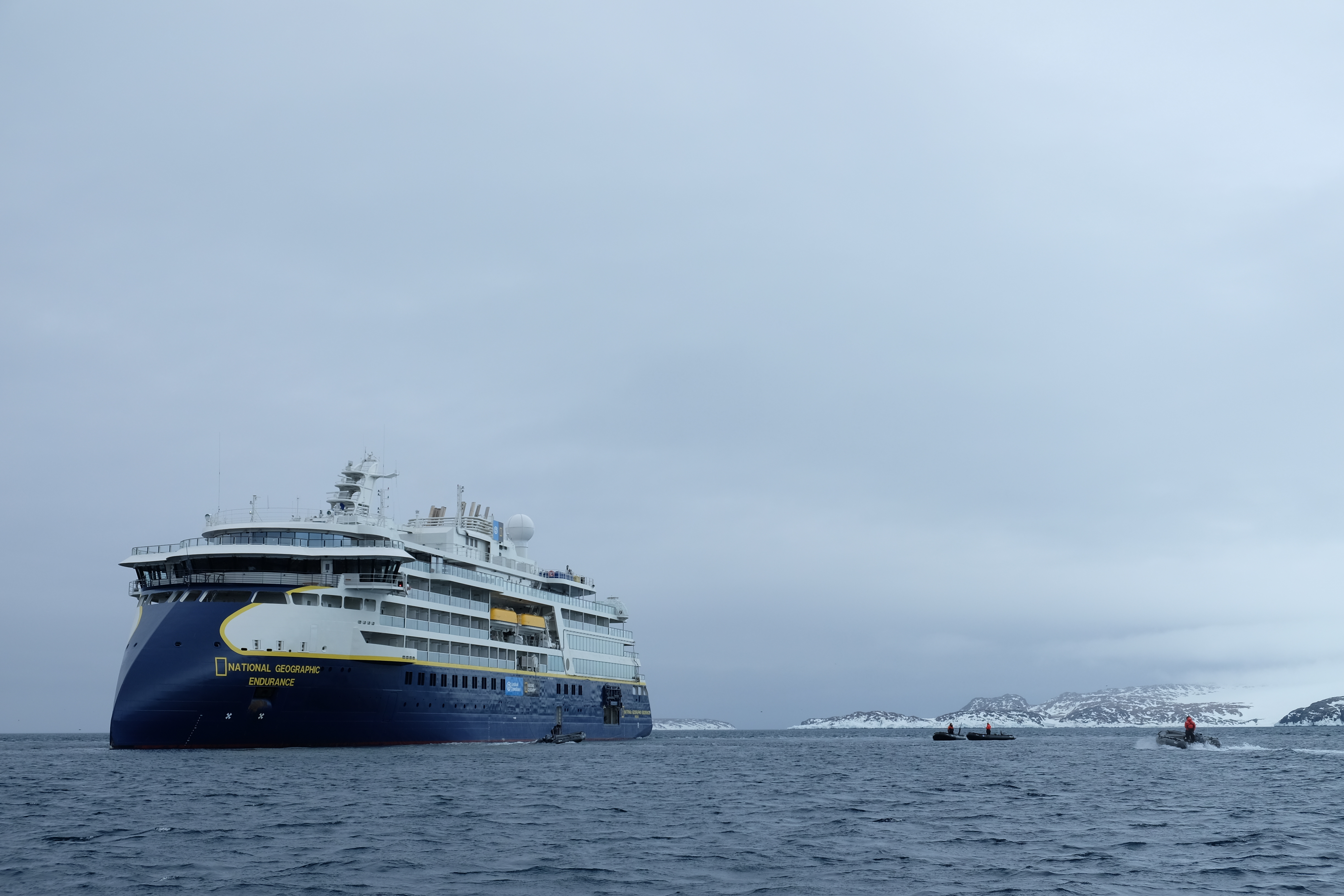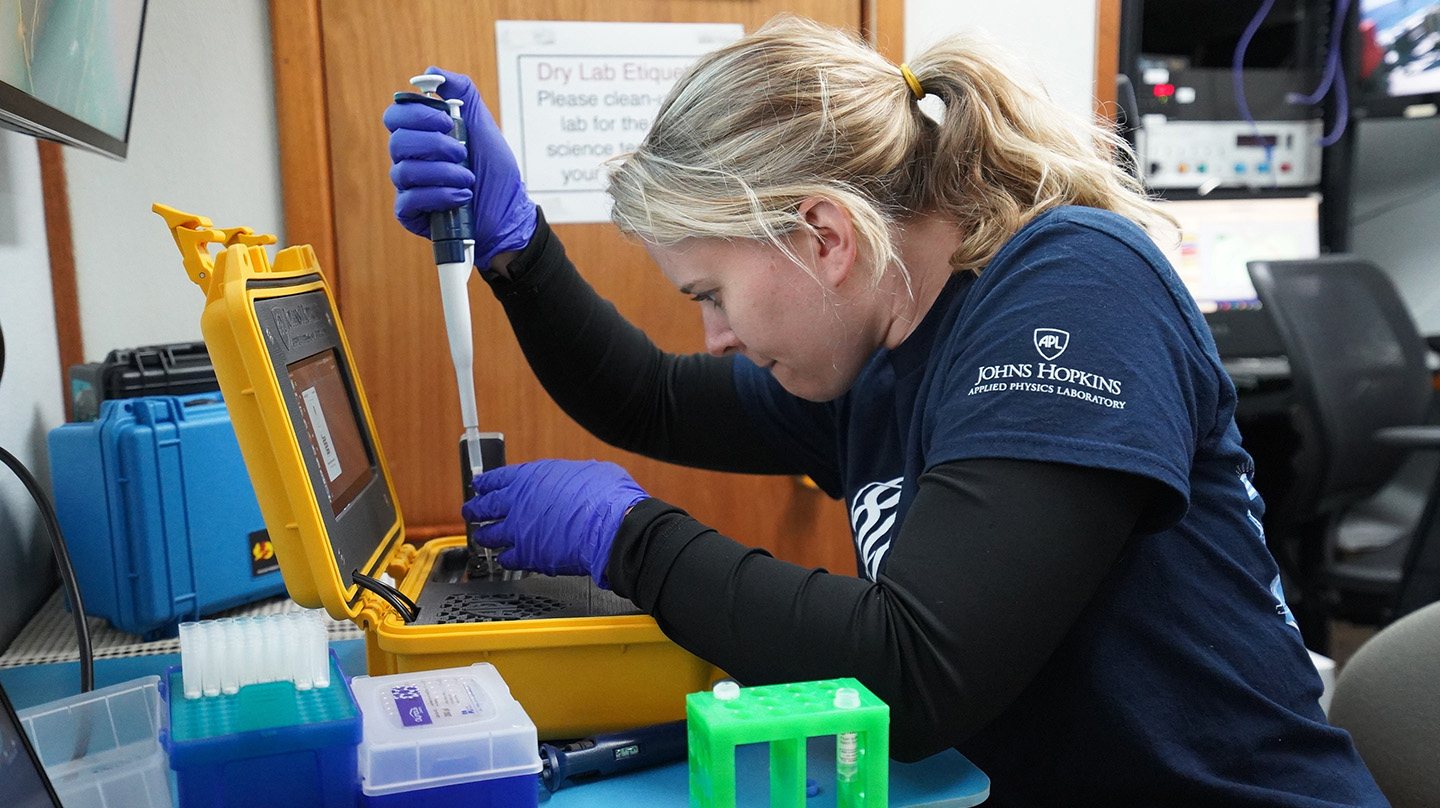News
From Lab to Sea, Johns Hopkins APL Genomics Researchers Bring DNA Sequencing Tools Into the Field
Genomics research and DNA sequencing typically occur in a laboratory setting, with high-powered instrumentation and large-scale computing resources. But at the Johns Hopkins Applied Physics Laboratory (APL) in Laurel, Maryland, researchers are diving deeper into operationalized genomics research — quite literally.
“There has been a lot of investment into understanding how microbes, especially bacteria or viruses, are causing harm to people and animals on land. Now we’re taking those same tools and applying them to the ocean,” said Peter Thielen, a molecular biologist who oversees the Applied Biotechnologies Section in APL’s Research and Exploratory Development Department. “Whether it’s the Navy using the data to survey field testing environments for marine mammals or basic marine biology researchers using the information to understand complex biological communities, it will help solve previously unsolvable problems at a much faster pace.”

Credit: Johns Hopkins APL/Peter Thielen
Building on rapid genomics capabilities developed to respond to outbreaks and pandemics like COVID-19, such as the APL-developed software platform Basestack, new research is now enabling advanced analysis approaches for environmental monitoring. These tools have made genomic characterization more accessible and user-friendly for scientists and public health workers — and now they’re doing the same for the characterization of the underwater world.
In April, a team of APL scientists led by Thielen tested these new capabilities in Monterey Bay on an effort sponsored by the Office of Naval Research (ONR) Marine Mammals and Biology (MMB) program. As it sailed, the research team from APL and Monterey Bay Aquarium Research Institute (MBARI) identified biological environmental DNA (eDNA) in near real time.
“We went out on a single-day cruise, roughly two kilometers [about 1.2 miles] out to sea, and took samples from as deep as 500 meters [about 1,650 feet] below the ocean surface,” Thielen explained. “As we were traveling to a second location, we sequenced the environmental DNA collected from the first stop. By the time we returned to that first location, eDNA had been extracted, prepared for DNA sequencing and analyzed so that we could characterize the organisms’ DNA collected there without having to physically capture and identify them.”
As organisms move through their environments, they leave behind cells containing DNA. The study of this marine eDNA can help researchers track changes to the ocean’s ecosystem for environmental and national security purposes.
During the trip to MBARI, the team focused on marine mammal detection and identification. The work supports several ONR-specific initiatives, including ensuring marine mammals are not in the vicinity during field tests and providing data for the MMB program, which is studying the psychological, behavioral, ecological and population-level effects of sound on marine mammals.
It’s the immediacy of APL’s techniques that makes this effort so unique — it has previously been demonstrated in specialized laboratories, but rarely with rapid turnaround while at sea.
“Typically, you’d have to go out to sea, get a sample, bring it back to land with you, head to a lab, process it there, and then you get your data in weeks to months. We’re trimming that time down to hours,” said Sarah Herman, who manages APL’s Biological and Chemical Sciences program.
Thielen equated the speedy new tool to a rapid COVID test when it’s compared to a PCR test requiring a lengthier wait for results. When a patient finds out they do or don’t have COVID within minutes, they can adjust their actions appropriately with confidence. It’s similar with scientists. “Being able to immediately identify next steps based on present or near-present genetic observations is paradigm-shifting,” he said.
The team headed back out to sea in June on two trips to the Arctic with Lindblad Expeditions aboard their polar vessel, National Geographic Endurance, to set up a permanent eDNA analysis platform, capable of supporting long-standing research capabilities while at sea.
“Scientists that join Lindblad in the Arctic, Southern Ocean and other places of the world can use the laboratory and open-source software capabilities that we've built and developed for their own research,” said Thielen. “We hope this will ultimately provide a constant data stream from these ships that is open for all scientists and is easily accessible.”
As development continues, the researchers see full-scale eDNA sequencing automation as key to a future of eDNA analysis. “We expect that future capabilities will be fully autonomous, without a human involved and operating on unmanned platforms. An underwater autonomous vehicle goes down, takes a sample and analyzes it before it even gets to the surface — generating a new data stream that can be used to understand what organisms are present in their natural environment,” said Herman.
